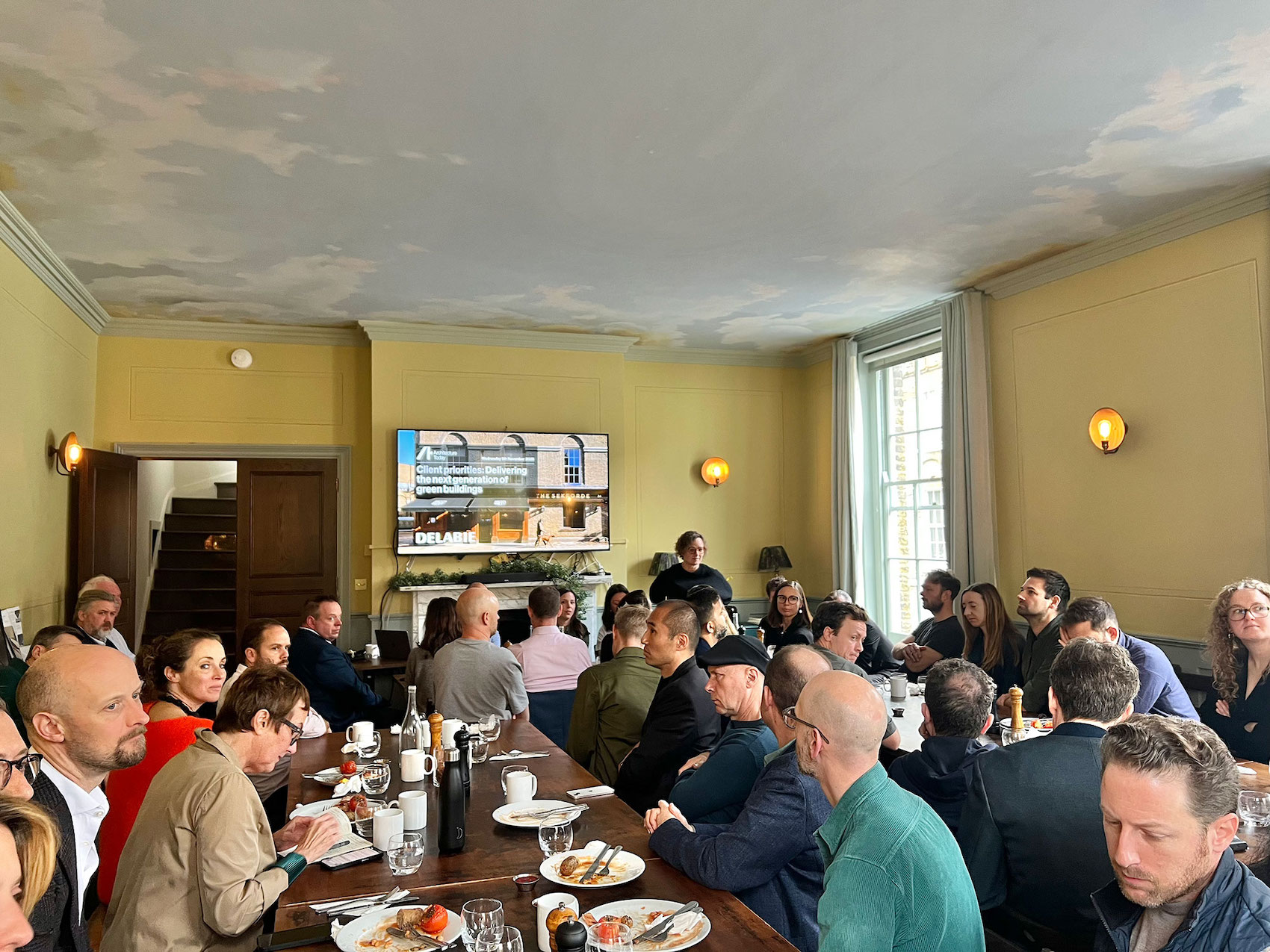Architects rely on powers of persuasion and presentation skills to win work, champion their projects and advocate for change. But do they have the skills they need to make their voices heard?
Stella Forde

Chris Williamson speaking at a public event in London. Photo by Egis / Catherine Chan.
I’ve witnessed eminent architects give presentations without telling the audience where the building is, what context it sits in, or even where north is.”
Before university – I’ve just completed an architecture degree at De Montfort University – I anticipated that architecture school would prepare me for practice with the interpersonal skills I needed to present, negotiate and network. But I was wrong. With such a strong focus on design skills, practical skills get left behind.
Resigned to the fact that university wouldn’t fill the gap in my interpersonal skillset, I took myself off to Toastmasters, a worldwide public speaking initiative that supports individuals with speaking feedback and practice.
The programme taught me how to develop my public speaking skills for my future career and the confidence it’s given me has made me all the more convinced that architectural education needs to be as much about interpersonal skills as our ability to design.
But the challenge isn’t limited to architecture schools, poor presentation skills leak into the working world, too.
Anna Liu, co-founder of Tonkin Liu Architects, has noticed this skill gap as well, saying that both students and architects “rely a lot on drawings but struggle to tell you about them.”
Liu avoided public speaking early in her career, but recently engaged in a public speaking workshop with her team which emphasised her idea that “public speaking is an art like architecture” and that “architecture tells stories like words do.” I was pleasantly surprised to find out that she had recently taken up my recommendation of enrolling at Toastmasters – and ended up loving it!
For Liu, the fact that “we live in an age where we have to speak up more and change things” makes it imperative that architects use their voices to stand up for what they believe in – and that it’s the responsibility of educators and practices to empower people to do this.
Catherine Burd, director of Burd Haward Architects and an experienced panellist and chair, believes it’s essential that architects learn to communicate effectively so that people outside the industry can understand the value of the work architects do.
She believes the crit system in architectural education “works well as long as it is conducted in a kind manner” but suggests we could do with getting better at “teaching good methods of presenting work.”
Also speaking of the crit system, Chris Williamson, co-founder of Weston Williamson + Partners and RIBA president elect, argued how the format encourages people to get used to presenting. “The crit system lends itself well to developing presentation skills as you learn on the job,” he told Architecture Today.
But a key problem is the absence of training within practice, continued Williamson. Determined to make interpersonal skills part of his ‘Lifelong learning’ agenda as RIBA president, he stresses the importance of flexible training that includes observation of well-delivered presentations and says we should learn from what other industries are doing to improve their public speaking skills. He argued that poor presentation skills jeopardise an architect’s ability to find for work and secure clients, leaving them dependent on partners to do it for them.
“I’ve witnessed eminent architects give presentations without telling the audience where the building is, what context it sits in, or even where north is,” he added.
All of which backs up my original hunch that – in this industry at least – it’s not just what you know, but how you deliver what you know.














